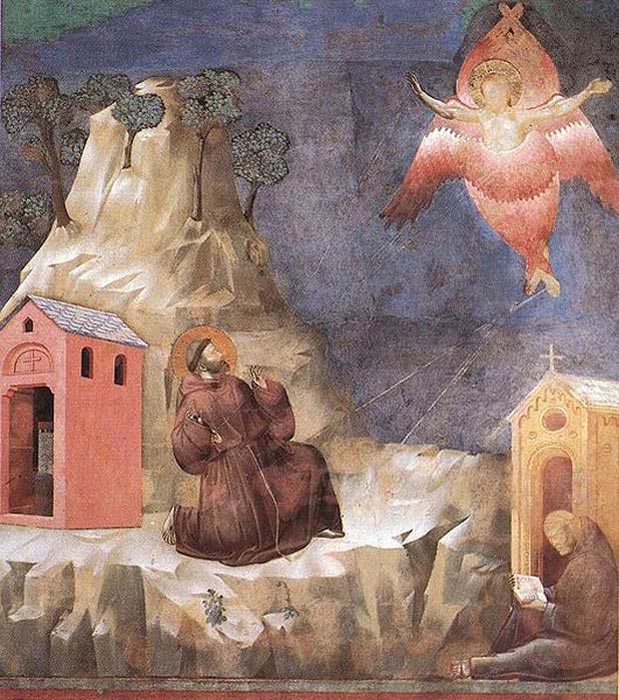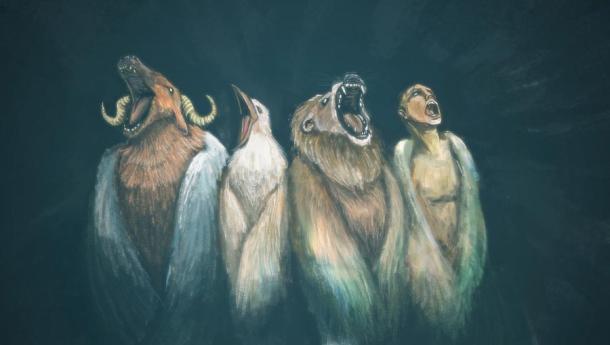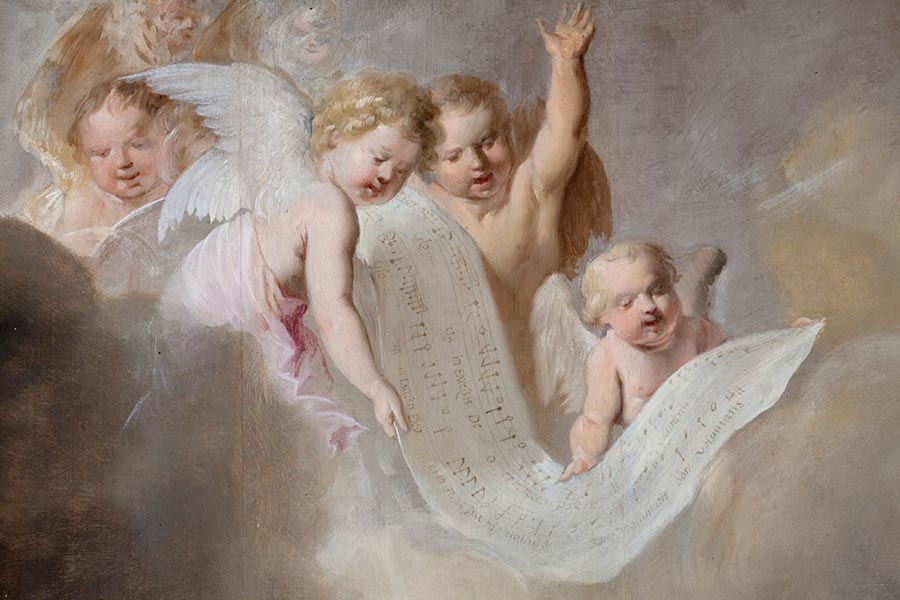Were the Cherubim of the Hebrew Bible the Chariots of the Gods?
The cherubim are a somewhat mysterious topic that occurs numerous times in the Hebrew Bible, but is never truly explained. We are given only brief glimpses into their role and their nature. Since the information given is insufficient to truly answer the question posed, thus we will attempt no such answer, but instead will present several possible partial interpretations which may or may not be mutually exclusive or contradictory.
One thing that can be said with certainty is that the word “cherubim” is by definition a plural word. The suffix 'im indicates a plural noun. Therefore, although the word appears as “cherubim” it should be read as “the cherubim” with a plural meaning. In the few cases where a single object is described, it can be assumed that the correct reading is “one of the cherubim.” This suffix also strongly implies an attribute which can best be described as “living.”
The ancient Hebrew language contains many such words ending in the ‘im suffix. Notable among these is “Elohim,” a plural group of living and intelligent beings, often interpreted as “gods.” The well-known “Nephilim” are another such example. Dozens of further examples exist and are the topic of a separate study by this author.
The Cherubim as Guardian Angels
Cherubim are commonly believed to be angels who act as powerful guards or attendants to the divine throne. The Bible supports this view to a point. In Genesis 3:24, God places cherubim and a flaming sword at the Garden of Eden to guard the way of the tree of life. Elsewhere, numerous instances occur where the cherubim are associated with the “throne of God.”
- Ancient Angels: Heavenly Messengers or Myths? The Origins of Cherubim – Part I
- Flaming Swords and Winged Beasts: What Were These Ancient Creatures? The Origins of Cherubim – Part II
In the Tabernacle, and later in the temple, gold cherubim on the mercy seat not only signified the presence of God, but also seemed to act in some sort of protective capacity (Exodus 37:7-9; Numbers 7:89; Psalm 80:1). However, this model of the cherubim as Yahweh's guardian angels falls a bit short when one considers the description and other activities ascribed to the cherubim throughout the scriptures.

Ezekiel’s wheel from a 19th century fresco in St. John the Baptist Church in Kratovo, Macedonia, said to be the wheels of the heavenly chariot. (Public domain)
Chariot, Flying Vehicle, or Top Gun: Different Interpretations of the Cherubim
In the Psalms and elsewhere in the Bible, Yahweh is said to “ride upon” the cherubim. In many of these references, the cherubim are described as some kind of flying vehicle, often compared to a chariot. This concept was so influential in second century BC Judaism that an entire sect of Kabbalah mysticism formed around this so-called chariot that they called the Merkabah.
King David, the author of the Psalms, describes “thousands upon thousands” of these flying cherubim and how they were instrumentally involved in several of his military victories. He even appears to indicate that certain tactics were pre-arranged ahead of time between himself and the cherubim in order to ambush the enemy. Some hints of this can be glimpsed in Psalm 18, Psalm 33, Psalm 68, and Psalm 102. This is also the origin of the phrases “the heavenly hosts” and “the Lord of hosts.”
The prophet Ezekiel put a slightly different twist on this concept, however. In Ezekiel's vision (sometimes interpreted to be a UFO encounter), he presents the cherubim not as the vehicle itself, but as “living beings” that somehow controlled Yahweh's craft. There is an intriguing link in the stories of Ezekiel and Isaiah which seem to equate the cherubim with another fascinating ‘im word, the seraphim.
The seraphim are understood to be snake-like in some regard, perhaps reptilian, but also represented as possessing the power of flight. The parallels to global mythological components here are abundant, from the Greek god Triptolemus to the plumed serpents of Mesoamerican lore and dragons of Chinese origin.

St. Francis’ vision of Seraphim (Public domain)
Multifaceted: Questioning Interpretations of an Asymmetrical Cherubim
Both Ezekiel and Isaiah write of their encounters with the Cherubim, describing them as having multiple surfaces. Typically, these descriptions are translated as monstrous descriptions of creatures with many wings and with four faces: “each creature had the face of a man, the face of a lion, the face of an ox and the face of an eagle.”
It is an intriguing fact that the mythologies of several other cultures combine these same animals into their own versions of what might be the same phenomena. The roughly contemporary Babylonian mythology includes a creature called the Lamassu, with body parts taken from a bull, a lion, an eagle, and a man.
Likewise, the Talmudic and deuterocanonical “Asmodeus” appears to have the same four faces in some depictions. Such depictions are thought to predate the many chimeric mythological creatures of a wide range of cultures, such as the sphinx of Egyptian and Asian fame, as well as the numerous Greek examples, and may have been an inspiration or influence on these later traditions.
Whether through intelligent design or by purely evolutionary means, all terrestrial life appears to follow a handful of simple heuristics; one of the most prevalent of which is bilateral symmetry. Bilateral symmetry provides matching sets of many elements of gross anatomy, from pairs of arms and hands, to pairs of eyes and ears. It is the reason that mirrors are effective in providing a reasonably accurate representation of reality.
This is where one may begin to notice a problem with the classic interpretation of the multifaceted cherubim. They are apparently the only animal in the known universe to break the universal law of symmetry. Thus, it is my opinion that the interpretation of the four faces suffers from translation problems. Animals just don’t have four faces.
The fact is that the text of the original Hebrew Bible is decidedly less clear regarding certain key words in these relevant passages. I do not think they were describing faces at all. Perhaps the other animals indicated are meant to provide some type of hint toward various attributes of the cherubim. In any case, the text contains enough ambiguity that we really need to question our assumptions on this translation.

The multifaceted nature of the Cherubim. (Marcos Telias / CC BY-NC-ND 2.0)
The Cherubim as Regional Lords
The prophet Ezekiel opens up a rather intriguing tangential topic in his 28th chapter. This chapter is written as a message to be delivered from Yahweh, through Ezekiel, to someone called the “Prince of Tyre.” As a strange twist, Ezekiel specifically mentions the cherubim who was standing guard at Eden in Genesis 3. He actually equates this singular cherubim (sic) with the “Prince of Tyre.”
But how can this be? This prince is the recipient and addressee of the prophet's message, obviously indicating that said prince must have been contemporary to the prophet (circa 600 BC), and therefore capable of receiving a message from him. Yet, Ezekiel claims that this same person was present at the Garden of Eden, as part of a narrative that took place at a minimum of several thousand years prior to Ezekiel's lifetime. This would seem to indicate that at the time of Ezekiel, this particular cherubim was thousands of years old, yet still alive, residing and ruling in the coastal city of Tyre, in Lebanon.
This fact may also indicate some level of support for the idea sometimes known as the “70 sons of El,” as presented in the Ugaritic texts. The crux of this theory is that the Earth is divided into several (ostensibly, seventy) territories, each ruled by a different regional god, one of whom is the god of Israel, namely Yahweh.
The theory is loosely evidenced by scripture, with the event of said division referred to historically in Deuteronomy 32:8. The model of “divine” rulers also seems to agree with the extremely long lifespans of the early biblical patriarchs, as well as the kings presented in the Sumerian kings list, the Aztec kings lists, the Mayan calendar, and the wall murals at the Egyptian site of Dendera, all of which speak of ancient rulers of former epochs whose lifespans reached the inhuman lengths of several thousands of years.
Remarkably, if these legends contain even a grain of truth, this may provide some evidence that human civilization is much older than currently believed in mainstream classicism; an idea that has been gradually gaining traction in recent years with such archaeological bombshells as Gobekli Tepe and many other sites and finds which are pushing back long-held and ferociously guarded traditional dating and interpretations.
Could the Cherubim Be Living Machines?
Isaiah is clear in presenting the cherubim as a living, intelligent being that is capable of occupying a position as a ruler over a city-state. Ezekiel makes a similar case, when he speaks of “four living creatures” in his experience as described in the book of Ezekiel chapter 1. Although he does not use the word cherubim in this description, he later has a second experience of the same creatures, as described in Ezekiel chapter 10, and this time he does include their name; cherubim.
However, living these creatures may appear, Ezekiel's description also contains many elements which seem to indicate a more machine-like quality to the cherubim. He describes what appear to be separate mechanical components, using names which all end in the 'im suffix, which would normally indicate living beings.
Apart from the cherubim; Ezekiel mentions the ophanim, panim, kenapayim, enayim, and sokekim. All of these words present difficulty to translators for they only ever appear in this context and therefor lack a “Rosetta Stone” to enable reliable translation, however, when read in context they appear to be components of a highly technical system. Isaiah concurs with this in his narration, even going so far as to say that he heard the living beings specifically naming certain subcomponents.
Both Ezekiel and Isaiah describe not only humanoid “living creatures,” but also the machinations of what appear to be some sort of flying ship. According to Ezekiel's narrative, several metallic objects descend from the sky, accompanied by billowing thick clouds with lights shooting from within. Ezekiel also employs the Hebrew term uma-asehem which translates to a more general term meaning machinery.
Isaiah indicates that the machines are fueled by combustion and that this vehicle transports him from Babylon to Jerusalem, a distance of nearly 3,000 kilometers (1,864 mi). When taken together with the account of Genesis 3, the prophets' descriptions appear to indicate a type of smart machine, and the cherubim may be interpreted as some kind of robotic entity or perhaps parts of an advanced and almost intelligent control system.

The Ark of the Covenant, a chest for the original engraved tablets of the Ten Commandments, was said to have been decorated with two cherubim angels sculpted out of gold. (pamela_d_mcadams / Adobe Stock)
Woven into Judaism
In the book of Exodus, Yahweh handpicks a skilled craftsman named Bezalel to work on a special project. The project includes the Tabernacle and the Ark of the Covenant, both of which are said to include cherubim. Bezalel receives special detailed instructions from Yahweh regarding how to implement the cherubim to a very specific blueprint.
As I discuss in further detail in my book UFOs in the Bible, these cherubim are not simply decorative embroidered tapestries and sculptures as is commonly believed. In fact, the Israelites had just been given a commandment by God expressly forbidding them from creating visual and graphic arts. “You shall not make for yourself an image in the form of anything in heaven above or on the earth beneath or in the waters below,” state the Ten Commandments in Exodus 20:4.
- The Jewish Satan Mastema and the Cosmic War Against God
- The Torah: Its History, Use, and Continued Purpose
Clearly, it is ludicrous to assume that God would forbid such work, then immediately turn around and order exactly such a project. Rather, the work of Bezalel appears to be more closely related to the technical algorithms of computer engineering. The Ark of the Covenant and the Tabernacle itself are fabricated to highly specific instructions out of materials including semiconducting metals and component arrangements recognizable to today’s electronic engineers.
These apparently high-tech items were themselves woven into the Hebrew religion at a fundamental level, becoming the central focus of the most holy rituals of ceremonial Judaism for the next several hundred years before vanishing without a trace into the mists of legend.
The Great Mystery of the Cherubim
In a fascinating semantic twist, the modern Hebrew language may hold some subconscious ancient knowledge. Kerub is a word in modern Hebrew which translates to “approximation” or “estimation.” This is a crucial concept to consider. Words themselves are merely representational of some underlying object or concept.
The words model the concepts. They are not intended to be an exact representation, nor is such an intention possible. Is it conceivable that the concepts swirling around the cherubim are so inherently complex or alien that we can only hope to achieve a rough approximation of understanding? Is this notion baked right into the Hebrew language to this day? It is certainly difficult to get a firm grasp on what the cherubim really are.
The truth is no one really knows what the cherubim are. Although the common perception is that they are small, baby-faced angels who live in the clouds, there is absolutely no evidence for such a conclusion in the ancient texts. Rather, they are presented as smart, yet machine-like, and in any case very strange. Perhaps if there is one thing we can learn from the cherubim, it is simply this; what we think we know is often wrong.
Top image: The common perception of the cherubim as baby-faced angels, as depicted in Pieter de Grebber’s Adoration of the Shepherds. Source: Public domain
By Ken Goudsward
Ken Goudsward is an independent researcher and author whose interests include archaeology, philology, ontography, epistemology, and thaumaturgy.His books include: “UFOs In The Bible”, “Magic In The Bible”, and “Enuma Elish: The Original Text with Brief Commentary”
Ken's webpage is at https://dimensionfold.com/authors/ken-goudsward/



















